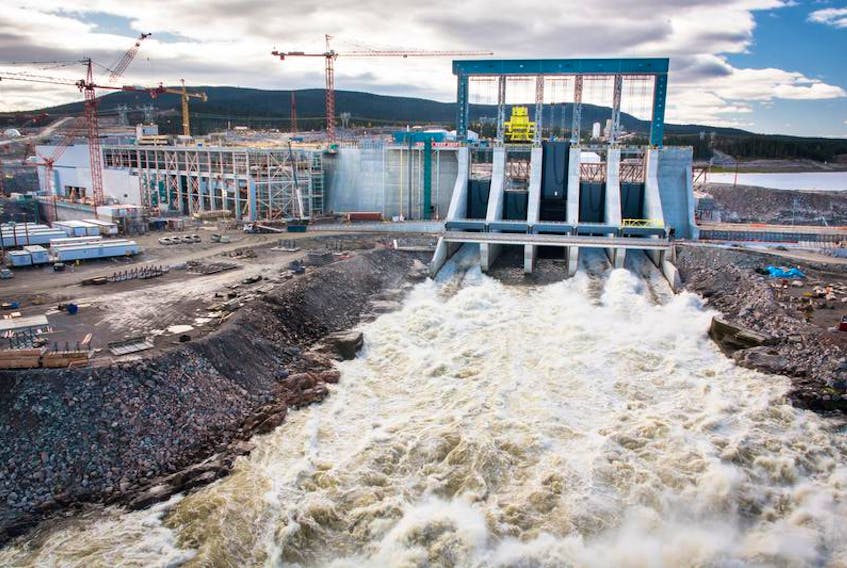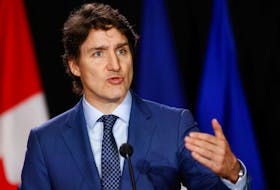Those who oppose Muskrat Falls say that the project is too big and the capital cost ($12.7 billion) too large for the province to support.
Comparing this figure to the budget figure (about $8 billion) and debt (about $20 billion), those who oppose the project have reason for concern. Others who oppose the project say that the type of project is fine but it is too big for the province and there may be a problem of finding enough clients to use the excess electrical capacity.
On the support side, there are those who agree with the project on the basis of very low interest rates and very high fossil fuel costs at the time the project was approved.
If there was ever a time to develop Muskrat Falls, that was the time.
And there are those who agree with a “green” project to help prevent excess greenhouse gas emissions from entering the atmosphere. And the current government has recently stated that there should not be any extra cost burden to the taxpayers and rate payers of the province as a result of Muskrat Falls coming on stream.
This statement suggests that the government is in support of the Muskrat Falls project.
The first question that comes to the fore is: why would the government make the above statement? Does the government not want to clarify this statement at this time? Is the government still waiting for further details to come in?
Related story:
Auditors bring Muskrat Falls as ‘best option’ into question
Perhaps the capital cost ($12.7 billion) is in question. And there is evidence to show that the capital cost has been partly paid and what is owing is somewhat less.
In the 2015 provincial budget speech (2015_Budget_Speech.pdf, page 33 and iii) government said it would put an equity investment of $760,000,000 into Nalcor and over a total investment period of 10 years, the provincial government will have invested $3.1 billion into Nalcor.
Is the money owing on Muskrat Falls project $12.7 billion or $9.6 billion (12.7 - 3.1 = 9.6) or somewhere in between?
Financing $12.7 billion at 3.5 per cent requires an annual interest cost of $444,500,000 (https://investorrelations.gov.nl.ca/default.aspx).
When Holyrood plant is operating at full capacity it consumes oil at the rate of 6,570,000 barrels per year. At the current price of oil (US$69 per barrel and exchange rate of 1.31 Canadian dollars to 1.00 US dollar) and assuming an average usage of 29 per cent, the current estimated annual cost of oil to run the thermal plant is $117,400,000. (http://www.releases.gov.nl.ca/releases/2012/nr/1116n07.htm). Add to the latter figure, maintenance costs.
Nalcor Energy is providing income to the provincial government (2018BudgetStatements.pdf, page v). This year, net income to the government from Nalcor Energy is $118,100,000.
As Nalcor Energy has other assets besides Muskrat Falls, the latter figure probably represents dividends from other assets.
Adding the income from Nalcor Energy ($118,100,000) to the estimated savings of not using oil at the Holyrood plant ($171,400,000) provides a sizeable annual income ($289,500,000) to offset Muskrat Falls expenses.
The federal government intends to impose a carbon tax, the details of which are still being worked out with the provinces.
I suspect this province will collect its portion of a carbon tax when “clean” electricity from Muskrat Falls becomes available including electricity for export.
Adding the oil savings to the dividends from Nalcor Energy and an expected carbon tax return and an expected small income from selling excess electricity may closely match the cost of financing Muskrat Falls. The government appears to be correct in its statement, and not giving supporting data because not all the data is available. If the federal government cancels a carbon tax, the provincial government’s statement lacks credibility.
There are many questions left unanswered.
The missing puzzle pieces may not be available until after the Muskrat Falls inquiry is finished.
Those who oppose and those who support Muskrat Falls project are united in supporting the Muskrat Falls inquiry.
Ian McMaster
St. John’s









